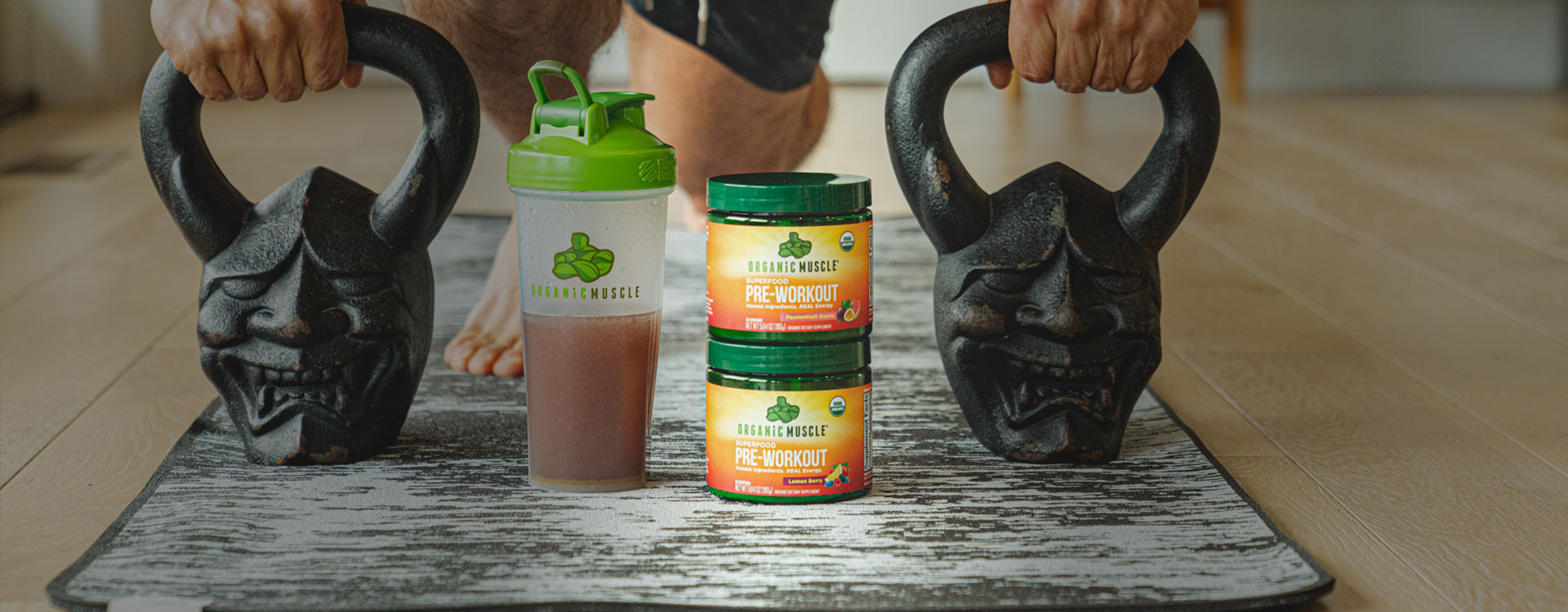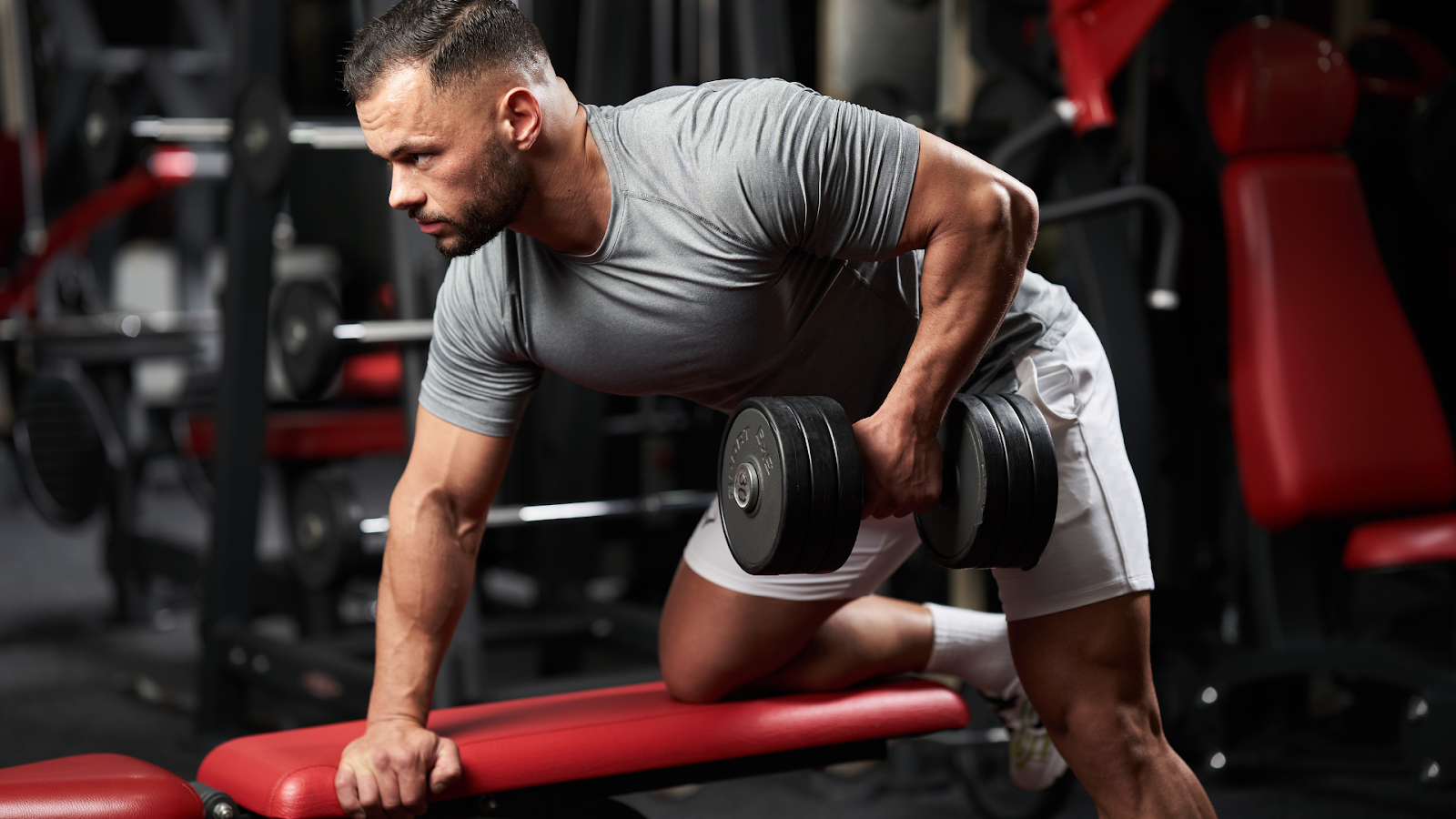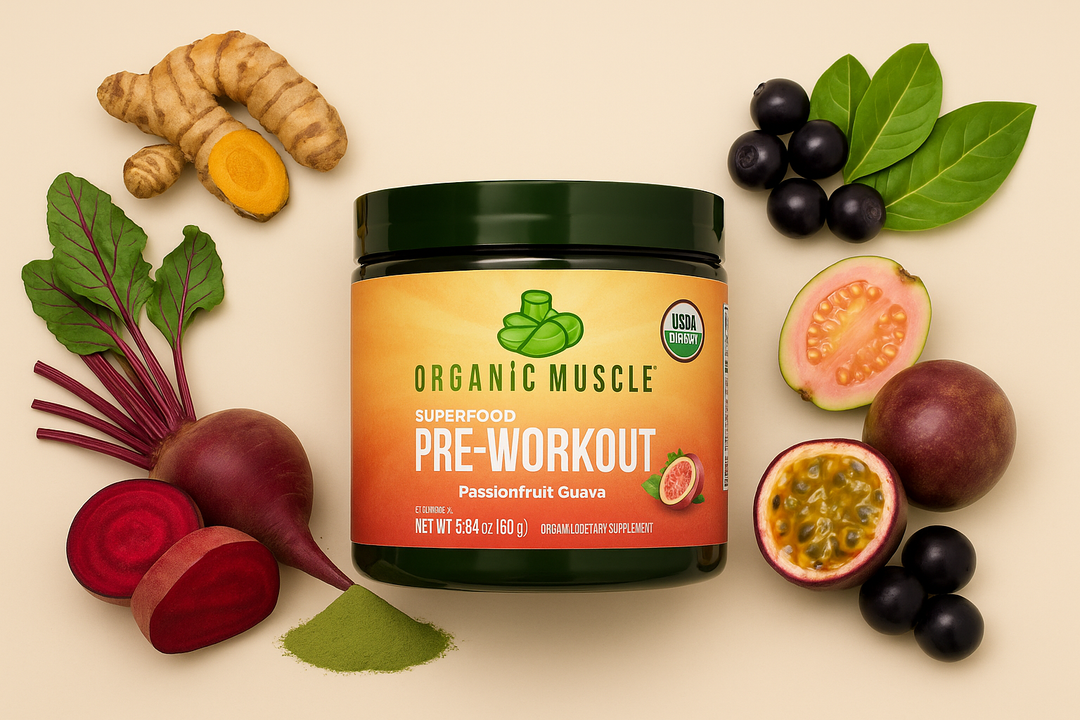Key Takeaways:
- Versatile and Effective: Dumbbells are a versatile fitness tool that promotes balanced muscle development, fat loss, and overall health benefits, making them suitable for all fitness levels.
- Focus on Form: Proper technique is crucial for safety and effectiveness. Avoid common mistakes such as using momentum, neglecting full range of motion, and overlooking breathing to maximize your workout results.
- Tailored Training Plans: Customize your dumbbell workouts by varying intensity, frequency, and incorporating both compound and isolation exercises to challenge your body and prevent plateaus.
Dumbbells are a powerhouse tool for anyone serious about building muscle and burning fat. Their versatility allows you to perform a wide range of exercises, making them perfect for beginners and seasoned athletes. By incorporating dumbbell workouts into your routine, you can effectively target multiple muscle groups while ramping up your metabolism, leading to impressive results in record time.
In this article, we’ll dive into the 10 best dumbbell workouts to help you pack lean muscle and torch unwanted fat. From strength-building movements that challenge your entire body to high-intensity circuits designed to maximize calorie burn, these workouts will push your limits and redefine your fitness journey. Get ready to lift, sweat, and sculpt your way to a stronger, leaner you!
How Dumbbells Can Transform Your Fitness Routine: Benefits And Insights
Dumbbells are more than just weights; they're a versatile tool that can revolutionize your fitness journey, offering benefits that meet and exceed your physical health goals. Whether you're a seasoned athlete or a health enthusiast embarking on a new fitness regimen, incorporating dumbbell workouts into your routine can lead to profound changes in your physique and overall well-being.
Enhanced Muscle Growth and Tone
One of the primary advantages of dumbbell exercises is their effectiveness in stimulating muscle growth and enhancing muscle tone.1 Unlike machines that often target specific muscles, dumbbell workouts engage multiple muscle groups simultaneously.
This holistic approach ensures balanced muscle development, fostering strength and definition. The ability to use dumbbells unilaterally (one arm at a time) also helps correct muscle imbalances, ensuring both sides of your body develop evenly.
Accelerated Fat Loss
Dumbbell workouts are exceptional for burning fat. Dumbbell swings, lunges, and rows increase your heart rate, incorporating a cardiovascular component into strength training. This hybrid approach maximizes calorie burn during and after your workout, accelerating fat loss while building muscle, a dual benefit that can significantly enhance your fitness results.
Flexibility and Convenience
Dumbbells offer unmatched flexibility. Suitable for a wide range of exercises, they allow you to adjust the weights to match your strength level and fitness goals. This adaptability makes dumbbell workouts ideal for everyone, from beginners to advanced athletes. Moreover, their compact size means they can be used anywhere, from a fully equipped gym to the comfort of your home, ensuring your fitness journey continues uninterrupted.
Improved Joint Health and Stability
Incorporating dumbbells into your fitness regime can improve joint health and stability. The control required to manage dumbbells enhances proprioception (awareness of body position), strengthening the connective tissues around joints. This increased stability is crucial for injury prevention and ensuring the longevity of your fitness journey.
Boost in Overall Health and Wellness
Beyond the physical benefits, dumbbell workouts contribute significantly to overall health and wellness. Regular dumbbell training can improve cardiovascular health, enhance endurance, reduce stress, and boost mood.2
10 Best Dumbbell Workouts To Build Muscle And Burn Fat
Here’s a breakdown of the 10 best dumbbell workouts that can aid in building muscle and burning fat.
Dumbbell Squats
Target Muscles: Quadriceps, hamstrings, glutes, core
How to Do It:
- Stand with your feet shoulder-width apart, holding a dumbbell in each hand at your sides.
- Lower your body into a squat by bending your knees and pushing your hips back.
- Keep your chest up and back straight.
- Press through your heels to return to the starting position.
Benefits: Squats target large muscle groups, increasing overall muscle mass and promoting fat loss due to the energy expenditure involved.
Dumbbell Bench Press
Target Muscles: Chest, shoulders, triceps
How to Do It:
- Lie on a flat bench with a dumbbell in each hand, arms extended above your chest.
- Lower the dumbbells to your chest while keeping your elbows at a 45-degree angle.
- Press the weights back up to the starting position.
Benefits: This exercise builds upper body strength and engages stabilizing muscles, aiding in overall muscle development.
Dumbbell Deadlifts
Target Muscles: Hamstrings, glutes, lower back
How to Do It:
- Stand with your feet hip-width apart, holding dumbbells in front of your thighs.
- Keeping your back straight, hinge at your hips and lower the dumbbells toward the floor.
- Engage your glutes to return to a standing position.
Benefits: Deadlifts are excellent for building lower body strength and enhancing core stability, which is crucial for burning fat.
Dumbbell Rows
Target Muscles: Back, biceps, shoulders
How to Do It:
- Bend at the hips and knees, holding a dumbbell in each hand.
- Pull the dumbbells towards your waist while keeping your elbows close to your body.
- Lower the weights back to the starting position.
Benefits: Rows target the upper back, promoting good posture and helping balance the muscles worked in pressing movements.
Dumbbell Lunges
Target Muscles: Quadriceps, hamstrings, glutes, calves
How to Do It:
- Stand upright, holding dumbbells at your sides.
- Step forward with one leg, lowering your hips until both knees are bent at about 90-degree angles.
- Push back to the starting position and repeat with the other leg.
Benefits: Lunges improve balance and coordination while working multiple muscle groups, aiding muscle gain and fat loss.
Dumbbell Shoulder Press
Target Muscles: Shoulders, triceps, upper chest
How to Do It:
- Sit or stand with a dumbbell in each hand at shoulder height.
- Press the weights overhead until your arms are fully extended.
- Lower the dumbbells back to the starting position.
Benefits: This exercise builds shoulder strength and size, contributing to a more defined upper body.
Dumbbell Chest Fly
Target Muscles: Chest, shoulders
How to Do It:
- Lie on a flat bench holding dumbbells above your chest with arms slightly bent.
- Lower the weights out to the sides in a wide arc until you feel a stretch in your chest.
- Bring the weights back together above your chest.
Benefits: Chest flies target the chest muscles effectively, enhancing muscle growth and definition.
Dumbbell Tricep Extensions
Target Muscles: Triceps, shoulders
How to Do It:
- Stand or sit with a dumbbell held overhead with both hands.
- Slowly lower the dumbbell behind your head while keeping your elbows close to your ears.
- Press the weight back up to the starting position.
Benefits: This isolation exercise targets the triceps, which helps improve overall arm strength and aesthetics.
Dumbbell Bicep Curls
Target Muscles: Biceps
How to Do It:
- Stand upright with a dumbbell in each hand at your sides.
- Curl the weights towards your shoulders while keeping your elbows stationary.
- Lower the dumbbells back to the starting position.
Benefits: Bicep curls are fundamental for building arm strength, crucial for many compound lifts.
Dumbbell Russian Twists
Target Muscles: Core, obliques
How to Do It:
- Sit on the floor with your knees bent, holding a dumbbell with both hands.
- Lean back slightly and lift your feet off the ground.
- Rotate your torso to one side, bringing the dumbbell beside your hip, then twist to the other side.
Benefits: This exercise effectively targets the core, aiding in fat loss and improving overall stability.
Dumbbell Workout Plans: Tailoring Your Routine For Optimal Muscle Gains
Maximizing muscle gains and fat loss through dumbbell workouts requires effort and strategic planning. The beauty of dumbbell exercises lies in their versatility and adaptability to various fitness levels and goals. Whether you're a beginner looking to build foundational strength or an experienced athlete aiming to sculpt and refine, tailoring your dumbbell routine is crucial for achieving the desired results.
Personalize Your Program
Start by assessing your fitness level and understanding your body’s unique needs. Dumbbell workouts can be modified to increase or decrease intensity, making them perfect for progressive overload—a principle critical for muscle growth. Opt for lighter weights with higher repetitions to tone and build endurance, or challenge yourself with heavier dumbbells for low-rep, high-intensity sets to boost muscle mass and strength.
Frequency Matters
How often you engage in dumbbell workouts will significantly impact your results. For beginners, a routine of 3 days a week can provide a solid foundation, allowing ample recovery time. More advanced trainers might escalate to 4-5 days, dividing their schedule into targeted muscle group workouts. This enhances muscle recovery and ensures each muscle group receives focused attention, promoting balanced growth and reducing the risk of injury.
Integrating Compound and Isolation Exercises
Including compound and isolation exercises enriches your routine by engaging multiple muscle groups simultaneously while allowing for specific muscle targeting. Compound movements like dumbbell squats and presses cultivate overall strength and muscle coordination, whereas isolation exercises such as curls and flys hone in on specific areas for sculpting and definition.
Progression and Adaptation
You must challenge yourself continually as your body adapts to the workout routine. Increase the weight, adjust the rep/set scheme, or employ more complex exercises to prevent plateaus and keep the gains coming. Listening to your body is paramount; respecting its limits while gently pushing its boundaries can yield impressive results.
Holistic Approach
Remember, muscle gains and fat loss aren't solely dictated by what happens in the gym. Nutrition, rest, and supplementation are equally pivotal in your fitness journey. Complementing your tailored dumbbell workouts with high-quality, certified organic supplements from Organic Muscle can enhance recovery, support muscle growth, and nourish your body with the best ingredients available. Embrace a holistic approach to your health and fitness goals by combining
Common Mistakes To Avoid When Performing Dumbbell Exercises
To ensure that you're maximizing the benefits of your dumbbell workouts while minimizing the risk of injury, it's crucial to be aware of and avoid common mistakes. Here are some key points to watch out for:
Ignoring Proper Form
Proper form is essential for all exercises, but it's particularly crucial when working with weights. Failing to maintain correct posture and alignment can lead to ineffectiveness and increase the risk of injury. Always start with lighter weights to master the form before progressing.
Skipping the Warm-up
Jumping into any workout without adequately warming up can shock your muscles, leading to strains and discomfort, which could sideline your fitness journey. A proper warm-up increases blood flow to your muscles, preparing them for the work ahead, and should never be overlooked.
Using Momentum Instead of Muscle Power
It's common to use momentum to lift heavier weights instead of relying on the muscle strength you aim to build. This reduces the effectiveness of the exercise and increases the risk of injury. Focus on slow, controlled movements to ensure that your muscles, not momentum, are doing the work.
Neglecting the Full Range of Motion
To get the most out of each movement, you must ensure you're moving through the full range of motion. Cutting your movements short can lead to muscle imbalances and limit the gains you're working hard to achieve. Full extensions and contractions are key to maximizing effectiveness.
Overlooking Breathing
Proper breathing is a pillar of successful weight training but is often neglected. Holding your breath can increase blood pressure and decrease performance. Remember to breathe out on exertion and breathe in on the release to keep oxygen flowing to your muscles.
Failing to Progress or Vary Your Workouts
Using the same weight for too long can lead to a plateau where you no longer see improvements. Increasing the weight, altering the number of repetitions, or changing your workout routine can help stimulate muscle growth and burn fat efficiently.
Ignoring Pain
It's important to differentiate between the expected muscle fatigue and actual pain. Pushing through pain is a mistake that can lead to serious injuries. Listen to your body and adjust your workouts accordingly. Rest and recovery are just as important as the workouts themselves.
How To Incorporate Dumbbell Workouts Into Your Weekly Fitness Schedule
When integrating dumbbell workouts into your weekly fitness routine, balancing intensity, frequency, and rest is essential. Here's a suggested approach:
Frequency:
- Beginners: Aim for 2-3 dumbbell workouts per week.
- Intermediate: Increase to 3-4 workouts per week.
- Advanced: Train 4-5 times weekly, potentially splitting workouts to focus on different muscle groups.
Intensity:
- Vary your reps and sets: To challenge your muscles, experiment with different rep ranges (e.g., 8-12 reps for muscle building, 12-15 reps for endurance) and sets (e.g., 3-4 sets).
- Gradually increase weight: As you get stronger, gradually increase the weight of your dumbbells to continue challenging your muscles.
- Incorporate compound exercises: To maximize efficiency, focus on compound exercises that work multiple muscle groups simultaneously, such as squats, lunges, and bench presses.
Rest and Recovery:
- Allow for adequate rest: Ensure you get enough sleep (7-9 hours per night) to allow your muscles to recover and grow.
- Take rest days: Schedule rest days or low-intensity activities to prevent overtraining and injuries.
Sample Weekly Schedule:
- Monday: Chest and triceps
- Wednesday: Back and biceps
- Friday: Legs and shoulders
Remember: This is a general guideline, and you may need to adjust your schedule based on your fitness goals, experience level, and lifestyle.
Comparing Dumbbell Workouts To Other Strength Training Methods: What You Need To Know
Understanding the nuances between various strength training methods is pivotal when embarking on a journey to enhance physical fitness. Dumbbell workouts, renowned for their versatility and accessibility, offer distinct advantages and considerations compared to other forms of strength training. Here's what you need to know to make an informed decision about incorporating dumbbell workouts into your fitness regimen.
Accessibility and Versatility
Dumbbells are widely accessible and can be used in various settings, from the luxury of a well-equipped gym to the comfort of your home. This accessibility makes dumbbell workouts a go-to choice for many fitness enthusiasts.
Moreover, the versatility of dumbbells allows for a broad range of exercises, targeting every major muscle group with the simple change of a grip or stance. This flexibility contrasts with more specialized equipment like leg press machines or fixed-weight stations, which cater to narrower exercise varieties.
Cost-Effectiveness
Dumbbells represent a cost-effective solution for strength training compared to the hefty investment required for sophisticated machines or a full home gym setup. This advantage is particularly appealing for beginners or those looking to enhance their home gym without breaking the bank.
Adaptability for All Fitness Levels
Dumbbell workouts can be easily modified to cater to various fitness levels, making them an excellent option for novices and seasoned athletes. Adjustments in weight, repetition, and rest intervals allow individuals to tailor their workout intensity, fostering gradual progress and minimizing injury risk. This adaptability contrasts some forms of strength training that require a higher baseline of fitness or familiarity with complex machinery.
Comparing Muscle Engagement
Dumbbell exercises often require more stabilization and muscle engagement than machine-based workouts. This is due to the freer range of motion, which engages secondary muscle groups for balance and coordination. Consequently, dumbbell workouts can offer a more comprehensive strength training experience by promoting muscle growth, endurance, and coordination in ways that fixed machines or isolated exercises might not.
Safety and Learning Curve
While dumbbells' simplicity makes them appealing, they also demand a higher degree of form awareness to prevent injury. Unlike machines designed to guide movements in a fixed path, dumbbells rely on the user’s ability to maintain control throughout each exercise.
This factor necessitates a learning curve, especially critical for those new to strength training. Proper form, guided by a fitness professional, ensures the effectiveness and safety of dumbbell workouts.
Final Thoughts
Incorporating dumbbell workouts into your fitness routine is a powerful strategy to enhance muscle strength, improve endurance, and accelerate fat loss. Each exercise we've outlined offers a unique set of benefits that cater to building a dynamic and versatile strength program and ensuring your workouts remain engaging and productive. The beauty of using dumbbells lies in their versatility and the ability to tailor exercises to meet your fitness goals, whether at home, in the gym, or on the go.
At Organic Muscle, we understand that achieving your fitness objectives goes hand in hand with nourishing your body with the right nutrients. Our certified organic, non-GMO, vegan, gluten-free, keto-friendly, and dairy-free supplements are designed to complement your dedication to health and wellness, ensuring that what you put into your body is as clean and effective as the effort you exert in your workouts.
We encourage you to embrace these dumbbell exercises to challenge yourself and elevate your fitness journey. Remember, dedication and consistency are key. With Organic Muscle by your side, you’re not just building muscle and burning fat but committing to a lifestyle that values holistic wellness above all.
Read also:
- 10 Best Arm Workouts To Build Lean, Defined Muscles
- 10 Best Leg Workouts For Runners To Boost Endurance
- Best Glute Workouts For A Stronger, Rounder Booty
Frequently Asked Questions About 10 Best Dumbbell Workouts To Build Muscle And Burn Fat
How can I ensure I’m using the correct form with dumbbells?
Ensuring correct form with dumbbells starts with choosing the right weight; it should be heavy enough to challenge you while allowing you to maintain control throughout the exercise. Begin with lighter weights to master the form before progressing. Additionally, consider consulting with a fitness professional or referring to instructional videos from reputable sources to visualize proper techniques.
What muscle groups can I target with dumbbell exercises?
Dumbbell workouts are incredibly versatile. They enable you to target virtually every major muscle group in your body, including your chest, back, shoulders, arms (biceps and triceps), legs (quadriceps, hamstrings, and calves), and core. The variety of exercises available means you can easily create a full-body workout routine or focus on specific areas.
Can I do dumbbell workouts at home?
Yes. One of the great advantages of dumbbell workouts is that they can be performed almost anywhere, including the comfort of your home. With a set of dumbbells and minimal space, you can execute many workouts without going to a gym.
How long should a dumbbell workout session last?
The duration of a dumbbell workout can vary based on your fitness level and goals. Generally, a comprehensive session lasts 30 to 60 minutes, including warm-up and cool-down. Focusing on quality over quantity and maintaining an appropriate intensity level will help you achieve effective sessions within this timeframe.
How can I add dumbbell workouts into my current routine?
Incorporating dumbbell workouts into your existing routine can be as simple as substituting certain exercises with their dumbbell counterparts or adding a dumbbell circuit one to two times a week for extra resistance training. Listen to your body and adjust your schedule to accommodate the additional workload without overtraining.
What is the difference between kettlebell and dumbbell workouts?
While both kettlebells and dumbbells are effective for resistance training, they differ in shape and handling, influencing certain exercises' mechanics. Kettlebells are particularly well-suited for dynamic, explosive movements and exercises that benefit from the unique grip and weight distribution, such as swings, cleans, and snatches. Dumbbells are ideal for more controlled, isolative exercises targeting specific muscle groups. Both tools can complement each other within a balanced fitness program.
Sources:
- Dumbbell Exercise. (n.d.). Physiopedia. https://www.physio-pedia.com/Dumbbell_Exercise
- Pinckard, K., Baskin, K. K., & Stanford, K. I. (2019). Effects of Exercise to Improve Cardiovascular Health. Frontiers in Cardiovascular Medicine, 6(69). https://doi.org/10.3389/fcvm.2019.00069
|
Disclaimer: Organic Muscle products are not intended to treat, diagnose, mitigate, prevent, or cure disease. Organic Muscle products should not replace prescribed medications or the variety of foods important to a healthful diet. |














